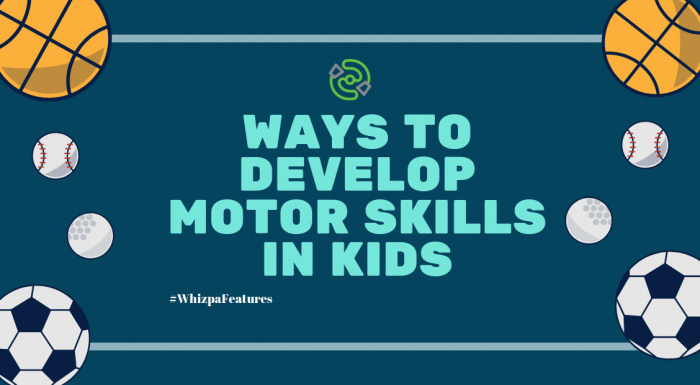
如何令小朋友身體更靈活發展
New parents or parents of infants/toddlers are often concerned about the development of their kids’ motor skills. There are 2 kinds of motor skills- gross and fine. Gross motor skills are abilities that involve the usage of larger muscles in the arms, legs, torso, or feet. These motor skills are needed for bigger movements such as standing, sitting, jumping, walking or swimming. Fine motor skills implies abilities that use smaller muscles of fingers, wrists, lips, toes, etc. These motor skills are needed to undertake finer and more delicate tasks such as picking up small objects with fingers, assembling items, writing with a pencil, and so on.
Kids need to develop these ‘motor skills’ early on to do day-to-day tasks with ease. Had we all not developed these skills when we were young, we wouldn’t have been able to write letters, button-up our shirts, zip-up our jackets, use scissors, or feed ourselves (you get the drift!).
We have listed down for you some fun ways for developing your little ones’ gross and fine motor skills. Let's get to them now:
Ideas for Gross Motor Skill Development
• Go Fetch that Bubble Maker - You would have never met a child who doesn't enjoy blowing bubbles. It can be a magical activity in the eyes of a child. You can convert this enjoyable activity into one where you can help your child develop his/her larger muscles. Blow some bubbles towards the ground and show your child how to stomp on the bubbles to burst them. This repeated movement will help build their leg muscles. Save this activity for a nice breezy day and enjoy the double benefit on fun and muscle development.
• Use the Playground Magic - Playground may get boring for adults but it is one of the most important place you can take your children for developing their gross motor skills. Have them kick their legs to make the swing work by itself, cheer them when they climb up and down the slides, or when they try reaching the top of a fake rock-climbing wall. Give them a free hand at the playground and let their imagination make them move.
• Stay Sporty - You can play a game of ‘catch’ or ‘kick the ball’ with your kids. Not only this helps improve their muscular strength but also enhances their hand-eye coordination. You can of course choose a soft or hard ball, depending on your child's age. Additionally, using toys like rocking horses, rocking chairs, ride-on trucks or cars (non-electronic) also provide the right foundation for development of gross motor skills.
Ideas for Fine Motor Skills Development
Let’s turn our attention to some activities that can enable development of fine motor skills:
• Break The Crayons - Go ahead and break those crayons in your child’s toy basket. No, we are not asking you to be mean. Having the child use smaller pieces makes them use 3 fingers or encourages them to develop the tripod grasp in their hands. They automatically start resting their little finger on the page when colouring which stabilises the hand.
• Bring Out the Clothes Pins- You may ask your child to hang pictures, self-made drawings, or even small pieces of clothes (like socks, face towels etc.) on a clothesline using the ‘spring clothes-pins’. This activity helps build pincer strength.
• Let the Rattles Jingle - Rattles can be used by both infants and toddlers. You will find no shortage of innovative, attractive, and safe rattles out there to pique their interests. Rattles build grip and foster tactile stimulation in kids. Tactile stimulation includes the activating of nerve signals beneath the skin's surface that educate the body about the texture, temperature and other touch-sensations.
• Baby Gyms are Still Fruitful - Baby gyms that have dangling toys are also quite pertinent for honing your little ones’ motor skills. Not only they help enhance a child’s reach/grasp, but they also help bring those little hands together for play.
• Spoon or Tong Those Marbles - You can create this simple activity at home - have the child move the marbles from one container to another, using a spoon or kitchen tong. Both these objects are great tools for working on kids’ hand strength and control.
• Don’t Underestimate the Utility of Playmats - Playmats are the easiest to procure and available in plenty of colours, formats, and designs. Playing on these mats can facilitate strengthening of the child’s arms/legs.
• Raid the Toy Basket - Make use of the soft-squeeze toys of varied sizes and shapes to build your child’s grasping power as well. Also, look for toys that have a hide/seek effect. You may also simply play peek-a-boo with your children to help enhance their object permanence ability. Object permanence implies the ability to understand that the object continues to exist even if it can not be temporarily perceived with the sensory organs i.e. seen, heard, touched, or smelled in any way.
• Pull Out Your Kitchen Sponges - Playing with sponges is an easy, cheap, and no frills activity to build your child's fine motor skills. Have 2 bowls ready. You can fill one bowl with water and leave the other one empty. Show the child how to immerse the sponge in the water bowl and then squeeze the water out from the sponge into the empty bowl. This activity can help strengthen their hands and forearms.
• Water Water Everywhere - Place a bowl filled with water and an empty bowl side by side. Using a medicinal syringe or a dropper, ask the child to transfer water from one bowl to the empty one. You can add a watercolour of your choice to the mix to make it more interesting/fascinating for the child.
• Bead Away to Glory- Beading can be fun and keep the little ones busy for a long time. You may encourage the child to bead a short or long string. This helps build the small muscles in their hands as they have to keep the string firmly in place to be able to push the beads in. Once the string is ready, do make a point to appreciate their creation and let them either use it themselves or gift to someone to further build their self-esteem.
Building up motor skills of a child helps the child become more independent and builds their self confidence. We as parents and caregivers can look for opportunities during the course of the day for our children to manipulate small items. We can ask them to help out in the kitchen ( like opening a lunch box, passing a spoon), push and pull with their hands (such as opening and closing cabinets) and lay the table. However, do remember that like any other skill, kids develop motor skills too at different rates. Try not to panic if you see their peers do it and your child can’t. Stay in touch with your healthcare providers and child’s school teachers to know if there are any areas of concern. In the majority of cases, all a child needs is right opportunity and encouragement. So shower it in plenty.
Check out our providers page for more sports activities to develop children's motor skills :
Active Kids Sport Club








